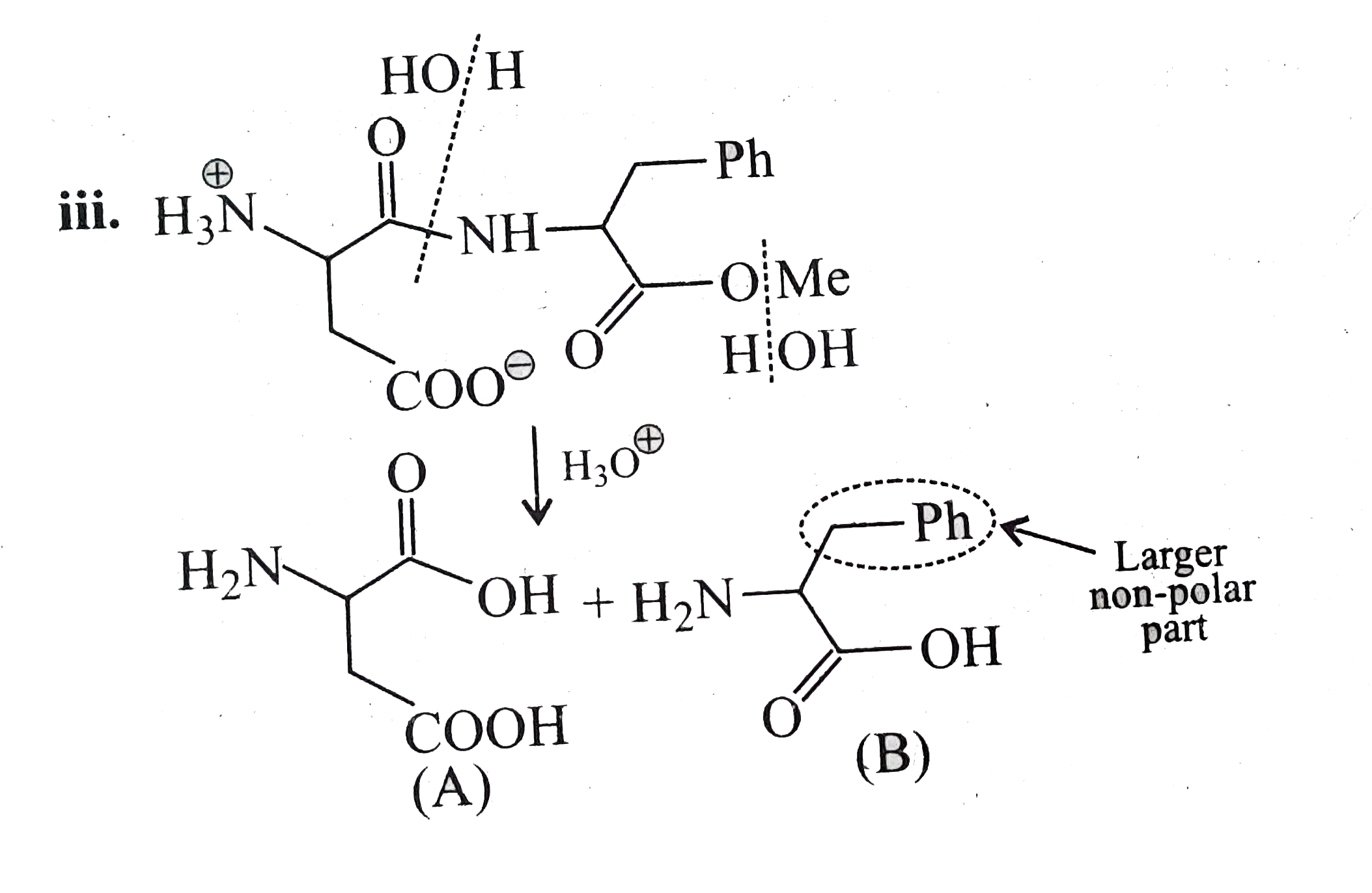Write the zwitterion structure for glycine.
To write the zwitterion structure for glycine, we need to understand the basic structure of glycine and how it behaves in solution.
1. Identify the Structure of Glycine:
Glycine is the simplest amino acid with the formula NH₂CH₂COOH. It contains an amino group (-NH₂), a carboxyl group (-COOH), and a hydrogen atom as its side chain.
2. Draw the Basic Structure:
Start by drawing the backbone of glycine:
- The central carbon (C) is bonded to:
- An amino group (-NH₂)
- A carboxyl group (-COOH)
- A hydrogen atom (H)
- Another hydrogen atom (since glycine is the simplest amino acid).
The structure looks like this:
H|H2N−C−COOH|H
3. Ionization of Glycine:
In a zwitterion form, glycine exists in a state where the amino group is protonated (NH₃⁺) and the carboxyl group is deprotonated (COO⁻). This occurs in a neutral pH environment.
4. Modify the Structure:
- Change the amino group from -NH₂ to -NH₃⁺ by adding a proton (H⁺).
- Change the carboxyl group from -COOH to -COO⁻ by removing a proton (H⁺).
The zwitterion structure of glycine will look like this:
H∣∣H3N⁺−C−COO⁻∣∣H
5. Final Structure:
The final zwitterion structure of glycine shows a positive charge on the amino group and a negative charge on the carboxyl group, making it a neutral molecule overall.
Glycine is the simplest amino acid with the formula NH₂CH₂COOH. It contains an amino group (-NH₂), a carboxyl group (-COOH), and a hydrogen atom as its side chain.
Start by drawing the backbone of glycine:
- The central carbon (C) is bonded to:
- An amino group (-NH₂)
- A carboxyl group (-COOH)
- A hydrogen atom (H)
- Another hydrogen atom (since glycine is the simplest amino acid).
H|H2N−C−COOH|H
In a zwitterion form, glycine exists in a state where the amino group is protonated (NH₃⁺) and the carboxyl group is deprotonated (COO⁻). This occurs in a neutral pH environment.
- Change the amino group from -NH₂ to -NH₃⁺ by adding a proton (H⁺).
- Change the carboxyl group from -COOH to -COO⁻ by removing a proton (H⁺).
H∣∣H3N⁺−C−COO⁻∣∣H
The final zwitterion structure of glycine shows a positive charge on the amino group and a negative charge on the carboxyl group, making it a neutral molecule overall.
Topper's Solved these Questions
- BIOMOLECULESBOOK - CENGAGE CHEMISTRYCHAPTER - BIOMOLECULESEXERCISE - Exercises (Concept Application)
25 Videos
- BIOMOLECULESBOOK - CENGAGE CHEMISTRYCHAPTER - BIOMOLECULESEXERCISE - Exercises (Linked Comprehension)
38 Videos
- BIOMOLECULESBOOK - CENGAGE CHEMISTRYCHAPTER - BIOMOLECULESEXERCISE - Exercises Archives (Analytical And Descriptive)
8 Videos
- AROMATIC COMPOUNDS AND ALKYL AND ARYL HALIDES BOOK - CENGAGE CHEMISTRYCHAPTER - AROMATIC COMPOUNDS AND ALKYL AND ARYL HALIDES EXERCISE - Archives Subjective
18 Videos
- BIOMOLECULES, POLYMERS AND CHEMISTRY IN EVERYDAY LIFEBOOK - CENGAGE CHEMISTRYCHAPTER - BIOMOLECULES, POLYMERS AND CHEMISTRY IN EVERYDAY LIFEEXERCISE - QUESTION BANK
8 Videos
Similar Questions
Knowledge Check
What is the Zwitterion?
AThe carboxyl group can lose a proton and amino group can accept a proton in the aqueous solution with give rise to a dipolar ionBThe carboxyl group can accept a proton and amino group can lose a proton in aqueous solution which give rise to a dipolar ionCThe amino group can accept a proton and ester group can lose a proton in aqueous solution which give rise to dipolar ionDThy amino group can lose a proton in aqueous solution and ester group can accept a proton in aqueous solution which give rise to the dipolar ion
(a) Write Haworth structure, of ''Lactose''.
(b) (i) What are non-essential amino acids?
(ii) Write Zwitter ion structure of ''glycine''.
(c) Name the nitrogenous base present in RNA but not in DNA.
View Solution
Aspartame, an artificial sweetener, is a peptide and has the following structure:
(i). Identify the four functional groups.
(ii). Write the zwitterionic structure.
(iii). Write the structures of the amino acids obtained from the hydrolysis of aspartame.
(iv). Which of the two amino acids is more hydrophobic?
View SolutionAs partune, an artifical sweetener, is a peptide and has the following structure:

(i) Identify the four functional groups.
(ii) Write the zwitterionic structure.
(iii) Write the structure of amino acids obtained from the hydrolysis of aspartame.
(iv) Which of the two amino acids is more hydrophobic?
View SolutionShow the presence of prptide linkage in the structures of glycine and alanine.
View SolutionWhat is the monomer unit of protein ? Give two examples of monomers , one of which contains sulphur. Write the zwitterionic form of one of them.
View SolutionWhat is Zwitterions.
View SolutionWrite the structure of p-toluidine.
View Solution
